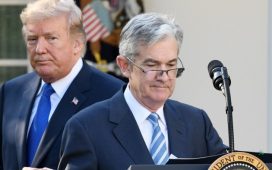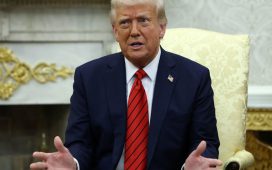The Federal Reserve held its benchmark interest rate steady for the first time in more than a year following 10 consecutive increases but signalled its intention to implement further rises this year.
At the end of its two-day gathering on Wednesday, the Federal Open Market Committee voted unanimously to forgo another quarter-point rate increase and kept the federal funds rate at the existing target range of between 5 per cent and 5.25 per cent.
The pause marked the first reprieve in the US central bank’s aggressive monetary tightening campaign since it first started raising rates in March 2022 and ushered in a new phase in its battle against stubbornly high inflation.
In a statement released on Wednesday, the FOMC said that skipping a rate rise would allow officials to “assess additional information and its implications for monetary policy”.
The Fed also released an updated “dot plot” that collates officials’ forecasts for the fed funds rate until the end of 2025. It indicated that most policymakers are projecting two more quarter-point increases this year, in a move that would lift the benchmark rate to 5.5 per cent to 5.75 per cent.
The Fed could implement an additional rate rise as early as next month, when its policy setting committee is scheduled to meet again. For that reason, economists said its decision to hold rates steady on Wednesday amounts more to a “skip” than a “pause”.
In March, when the dot plot was last updated, most policymakers projected the central bank would not raise rates beyond the current level, in large part because of banking stress following the failure of Silicon Valley Bank and other lenders.
The Fed is facing the tricky task of determining how much more to squeeze the economy amid uncertainty about the degree to which a credit crunch will weigh on growth and hiring. Officials are also assessing the cumulative effect of their monetary tightening given that rate rises take time to be fully felt in the real economy.
Jay Powell, the Fed chair, said last month that the central bank could afford to look at the data and make “careful assessments” in terms of the path forward for policy.
Since then, the economic picture has been mixed and has stoked an intense debate among officials over if and when more rate rises will be needed. Economists polled by the Financial Times last week believed the central bank would raise rates at least two more times this year to between 5.5 per cent and 6 per cent.
The latest consumer price index report, released on Tuesday, showed a deceleration in annual inflation despite persistent price pressures across many segments of the economy. The labour market has lost some momentum but remains very strong, encouraging consumers to keep spending.







